The below is approximately a 2700 word article on experiments, structures in your skull, and how to practically apply all this new information. The first portion is the “Too Long, Didn’t Read” version!
Enjoy!
Note: The below video shows me performing a nasal saline solution that requires pressurized solution into, well, my nose. I show it on the video, so if you are squeamish, turn your head away around the 1:35 minute mark!
—
TL;DR
1. What is a nasal saline solution?
Nasal saline solution has been a home remedy for aiding in the process of cleansing the nasal airways. This method is often utilized in conjunction with allergies, and just being stuffy in general.
2. What was the hypothesis?
After consulting with others, and doing my own research, I hypothesized that performing a nasal saline rinse would improve movement quality via inhibition of specific movement pathways, regardless of previous inputs/sympathetic drivers (in this case, performing a one repetition max back squat).
The act of performing a true maximal repetition back squat will aim to recruit an extension based strategy – one that calls upon various musculature that can be aptly described through “Janda’s Upper and Lower Cross syndromes.”
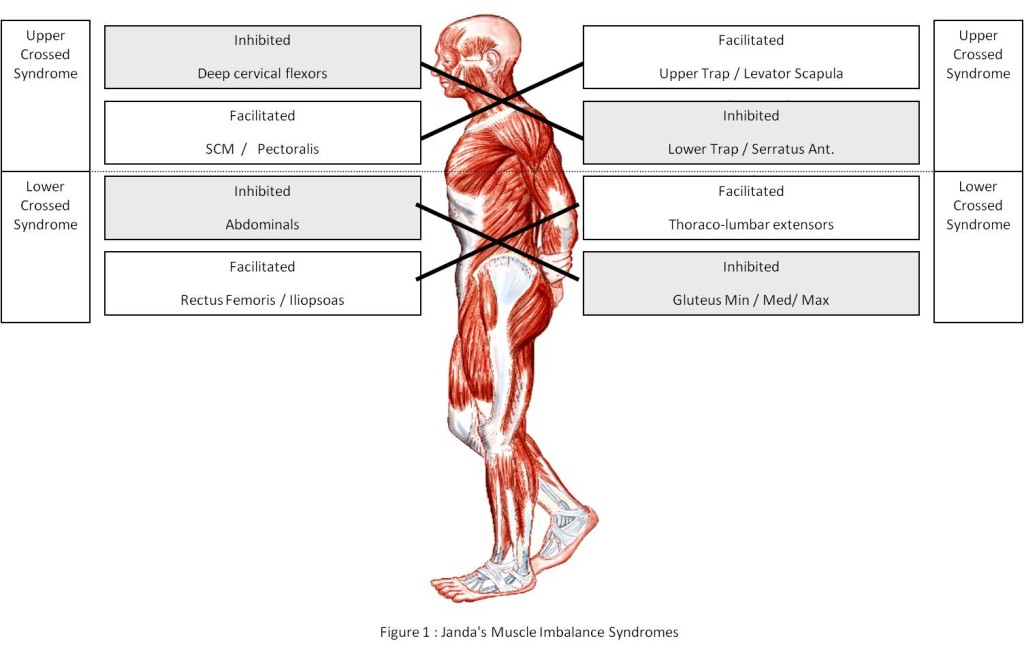
3. What occurred?
Movement capacity of varying screens, assessments, and tests were checked before squatting, after squatting, and post-nasal saline solution rinsing. I also recorded everything in one take!
4. What improved or decreased in measures?
Fitness qualities of strength and power seem to not be affected directly (speed and endurance were not measured) because, well I did this video twice – so strength was not negatively affected. This video was the 2nd filming because my phone did not have enough space to record the whole thing – so filming stopped initially on the first ride through.
Biomechanical measurements of various philosophies seem to be affected, which speaks about movement quality and motoric control of specific muscle groups – both before squatting, after squatting, and post-nasal saline solution application.
For a specific example…
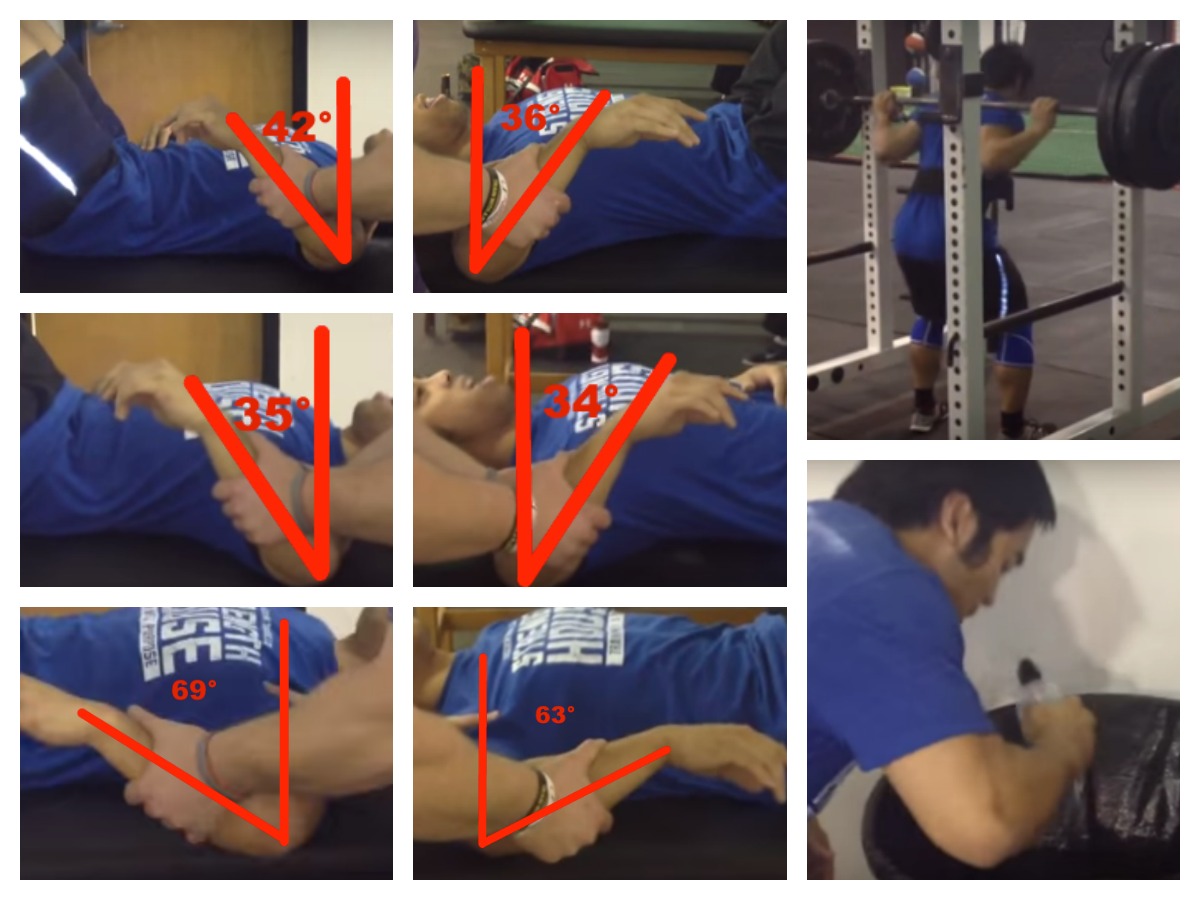
Before Squatting…
Top Left: Left GH IR = 42°, Pre-Squat
Top Right: Right GH IR = 36°, Pre-Squat
… Glenohumeral (GH) internal rotation (and shoulder mobility) was assessed to identify whether or not shoulder internal rotators were activated (prior to squatting).
(My total GH range of motion is 160°+, so if GH IR is approximately 40°… external rotators are about 120°!)
After Squatting…
Mid-Left: Left GH IR = 35°, Post-Squat
Mid-Right: Right GH IR = 34°, Post-Squat
… These measurements were reduced – that is the glenohumeral internal rotators were not activated, and the measurements were less than before squatting.
Instead, the (GH) external rotators had to likewise be activated, representative of an extension based strategy needed when you are holding the barbell in the back squat position (especially in a low bar position).
Post-Nasal Saline Solution
Bottom Left: Left GH IR = 69°, Post-Nasal Saline Solution
Bottom Right: Right GH IR = 63°, Post-Nasal Saline Solution
The measurements of the upper body improved dramatically – the GH internal rotators were facilitated (activated), and inhibition of the extension based strategy was observed.
It is likely that airways were opened via nasal saline solution, and the nasal pathways allowed more air to flow through my lungs, which allowed me to inhibit specific musculature, along with other patterns associated with an extension based posture.
It can be observed that GH internal rotation (bilaterally) improved significantly with no other intervention other than the nasal saline solution. Likewise, other movement patterns improved significantly as well, both officially on camera, and off camera (which had
5. What is the application to sports?
Respecting the structures found within the skull are important and should not be underrated. By influencing something as simple and local as the nasal airway, you can have a cascade of effects that seem to reach out into other systems on a global level, outside of just the muscular and skeletal system.
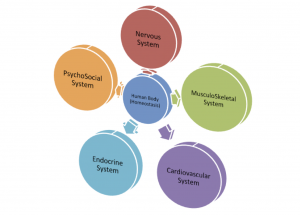
Influencing the cardiovascular system and central nervous system in a positive manner can hopefully influence recovery strategies for athletes who are looking to maximize what they have at their disposal.
6. What is the application in day to day living?
The general population (and myself) can often be found increasing stimulation to the sympathetic nervous system in order to improve capacities for everyday living. By learning to turn down the knob on the sympathetic nervous system and instead turn up the parasympathetic nervous system, hopefully more efficient rest and recovery can be acquired in order to improve quality of life. This is merely another attempt at performing the above.
——
What a Time to Be Alive: The Assessment Era
When it comes to understanding assessments, the whole process of understanding joint position is merely one item that is to be understood. The bigger, overarching, yet very simple question of “Why are you even assessing?” must be asked to achieve true understanding of the assessment process.
Sometimes, assessments are not necessary.
If you have upwards to 100s of individuals to coach on a day to day basis, you are a one man show, and you cannot concisely view detailed movement patterns from person to person, it will be very difficult to gather important information.
If you are attempting to improve fitness levels of strength, power, speed, and endurance, perhaps an individualized biomechanical assessment may not be necessary for hundreds of individuals at one time. Keep these thoughts in mind before divulging the rest of this mini-essay.
Logistics aside, I would like to dive deeper into a topic that I believe very strongly about, which is manipulating inhibitory methods in order to produce maximal activation within a movement capacity. Long story very short – I want to inhibit a pattern very quickly, in order to ramp up and accelerate just as fast!
The ideas of regional interdependence, along with a salient stimulus, both build upon the idea that the body self-regulates on a much more complex medium than just bones articulating here, and muscles acting on the bones.
There are nerves that innervate muscles, that are weaving in and out of fascial lines, that arrive from the peripheral nervous system, that originate from the central nervous system!
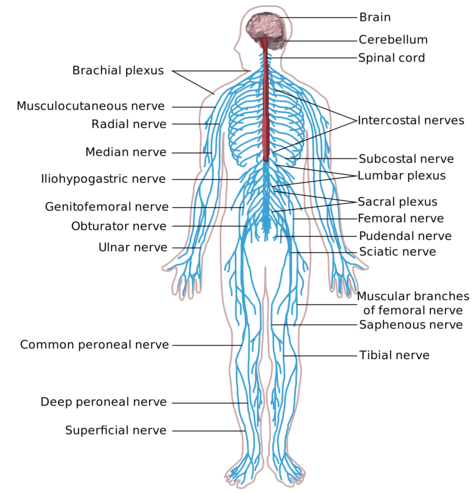
The essential idea that I’d like to promote is that the act of lifting weights in a progressive manner is aiming to shift homeostasis towards a state of being that can handle progressively heavier loads, more force absorption (and thus, possibly more force production as well), on top of improving ability to mobilize and utilize energy stores found within our bodies!

Now, there are multiple factors that lead to increased and specific adaptations to an imposed demand, such as lifting heavier weights and getting faster:
- Just enough of a stressor, and you can meet those demands.
- Not enough of a stressor, and you won’t improve because your body simply isn’t stimulated to grow.
- Think of doing 3 sets of 10 reps for literally ever – your body will get used to doing only those sets and reps.
- Too much of a stressor, and your body will be overstimulated and will not have enough ability to recover from the given demands.
However, there are also other ways to inhibit these overstimulated demands through the manipulation of specific reflexes and movement pathways.
Many times, the fitness industry seeks these methods out by foam rolling, stretching, and performing self-myofascial release type of methods (lacrosse ball work, massage/manual therapy, etc.) in order to inhibit a pattern or muscle group. That is fine, but if it doesn’t work, or if you have to keep on doing it in order to achieve the same effect – then what?

Essentially, there is more than one way to provide an inhibitory response. Seek out multiple methods, and perhaps you can improve your ability to recover.
Case Study – Me, Squats, and Nasal Saline Solution
So, lifting weights is a sort of “perceived threat” to the body. Not in the sense of this is going to be painful, but rather there is a stimulus (adaptations to lifting weights), and there is an adaptation (body improving bone mass density, cross sectional area of muscles, etc.).
However, if you were to keep on lifting weights without the appropriate amount of rest/recovery, what happens? Or what happens if you lift a weight that is too much load for you to handle?
I’d venture a guess and say that this is a lot of stress to the body, and you may lose stability of a specific system. Now, to use the neuromuscular movement patterns we are all hopefully familiar with, these patterns may be shifted negatively – all because of a lack of ability to adapt!
More specifically, what occurs when you attempt to “fix” your movement patterns, but there is no ability for you to get into that range of motion?
Well, then we can assume a few things:
- There may be a bony adaptation that is limiting you.
- You don’t know how to perform a squat (or insert pattern) (either due to lack of prior knowledge, or perceived neurological threat).
- Soft tissue structures are limiting you from achieving that range of motion (often due to neurological threat, and/or increases from localized stress)
Well, just like how there can be harder structures within the hip and head of the femur, there are also ideas of interconnectedness within the skull.
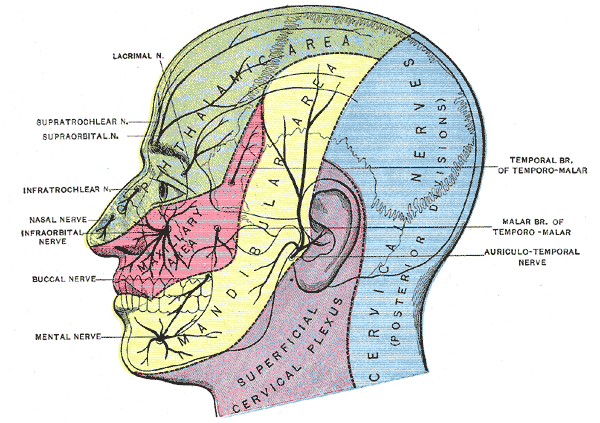
There are structures involving the bite, nasal cavities, orbital structures, and obviously the brain as well, that can allow better or worse movement to occur, at least, from an exercise point of view.
Zac Cupples elaborates a lot more here on why this particular inhibitory method works. Essentially, it comes down to understanding that if you cannot inhale through a specific nostril, your ability to inhale/exhale will be altered throughout your lungs.
If you cannot inhale through your lungs, perhaps you may be overinflated with attempts at constant inhalation – inhibition of the accessory respiratory musculature is necessary (along with simultaneous activation of the main musculature for breathing).
Just imagine the last time you had a stuffy nose – it probably made for an awful time for singing, running, or just general well-being. All of these things need air in order to perform well – can you imagine squatting the house with both nostrils clogged with snot and mucus? Sounds like an awful time.
In fact, the practice of yoga considers these items relatively well. Following the process of jali neti can lead you to understand that cleansing the nostrils is actually a method for cleansing of the airways.
From my time in undergrad (I took a Yoga class for a solid 5 months as a graded course), I can recall a technique utilized also aimed at nostril breathing named pranayama – which has claims of improving stress levels (by decreasing negative stressors), improving distances in six-minute walk times (find article HERE), along with improving brain function (find article HERE) because nostril breathing is correlated with performances in various tasks!
It’s All About the Reflexes Baby
So if I lost you with the above talk about yoga, fear not! There can be more than one explanation for the sudden change in movement patterns seen in my squatting and saline solution video, and other functions of movement patterns.
A lot of the things that are successfully performed on an exercise level can be attributed to reflexes. There are tons of them (find reflex list HERE) and I am here to elaborate on a few of them, and identify how these few reflexes are being stimulated in order to provide an inhibitory effect!
Nasal Reflexes – It’s Not All Just Sneezing
The nasalcardiac reflex has a mechanism that involves a specific structure (called turbinates or the nasal concha) that many people should be familiar with if they eat ice cream way too fast. The structure that is stimulated is the nasal concha, and it is stimulated when you experience brain freeze.

Turbinates can be synonymous with the nasal concha, and these structures coincide with really cool nerves, specifically the trigeminal nerve, for starters.
Long story short, if you stimulate the turbinates, you can induce a type of bradycardia, or rapid lowering of the heart rate. This could be good reason to not try this experiment if you have an already very low heart rate and/or blood pressure.
When stimulation of any branch of the trigeminal nerve occurs, stimulation of the parasympathetic nervous system is recruited – and thus, the inhibition of the sympathetic nervous system must occur as well. This is referred to as the trigemino-cardiac reflex!
The trigeminocardiac reflex (TCR) is defined as the sudden onset of parasympathetic dysrhythmia, sympathetic hypotension, apnea, or gastric hyper-motility during stimulation of any of the sensory branches of the trigeminal nerve.
Practical Application
The practical portion of this information essentially allows us to identify whether or not specific structures within the skull may be limiting movement capacity or not. Essentially, how does identifying structures within your skull help us from a movement perspective? What can we derive from this information?
Well, I would like to believe that this leads us to improve the questions we ask in an initial assessment. Whether you are working with athletes, or general population, these items could lead you to improving your ability to deliver a high quality service for your clients and patients!
I also believe that by identifying other possible sources of stress, albeit a constantly and subtly turned on stressor (think dimmer switch that is slightly turned on for years on end), will allow you (the professional) to provide better solutions that could be very easily managed from an expectations point of view.
Essentially…
Have you ever had braces (or are you currently wearing braces)?
- Braces can cause tightness on your teeth (obviously), but more importantly the constant (and perhaps inaccurate) reference that your teeth are getting may impede neck movement, which can cause a cascade of information down the kinetic chain that something is always tight (from the teeth/neck on down the body!).
- Anecdotally I had braces for 5 years of my life, and this was right around when I was growing up and being surrounded by more formal sporting organizations (high school, league teams, etc).
- Did having braces contribute to my lack of coordination? Well, I can’t go back in time to do an experiment on myself, but tell you what – I started dancing after I got my braces off, and I was moving a lot better. Very n=1 of course, so take that with a grain of salt.
Action Plan
- Make sure you are comfortable with your braces (as best as you can). Use wax on the sides if you are brushing on your cheeks, and make sure to always clean out your teeth. If you feel tight with braces on, make sure you are in the correct position by asking your orthodontist if it should feel like “this” (if they feel too tight or wound up) in order to live with higher quality of life!
Have you been sick (cold, flu, etc.) recently?
- Being sick can cause a cascade of residual and systemic threat to the body. Lifting or moving may not be the best idea, as attempting to increase stress to the body may be disadvantageous to the goal at hand (improved resilience to stress).
Action Plan
- Get some sleep, and get over your cold! Also, doesn’t help that your nose getting stuffy will decrease your ability to breath.
- Perhaps improving symptoms via over the counter medications could be the resolution you need in order to move better.
Do you wear glasses/contacts?
- Reading things on a phone, constantly looking for the floor in many movements, and watching your step every time you walk (for fear of tripping, losing footing), can cause, yes another, cascade of lack of appropriate adaptability to stressors. If you are constantly “on” then you won’t be able to ever turn “off” – much less so if you are wearing the incorrect glasses/corrective vision.
Action Plan
- Make sure you have updated vision, or at least, stay away from deleterious things involving straining your eyes (surprise surprise, your eyes have muscles that can become tired as well!).
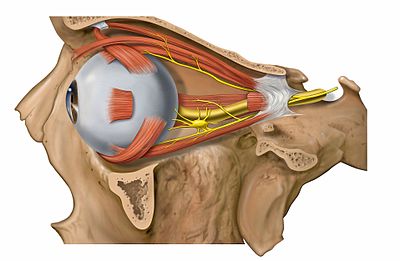
Imagine holding a purse for 24 hours – your arm would get pretty tired! Similar things can happen if you play video games for a day straight!
Any surgeries to the face? Any concussions?
- Let’s face it – injuries happen. Concussions are a normal part of household lingo, along with the concept that contact can occur directly to the face. When this happens, structures in the face, and in the brain, can be affected.
- By asking this question, you are more equipped with providing a better screening service, or even referring out if symptoms are not resolved.
Action Plan
- The two things that come to mind with respect to trauma to the face and/or brain involve vision and vestibular issues. When it comes to understanding how vision plays a role in exercise, I can defer to this article by Kevin Neeld where he discusses proprioception, the vestibular system, and the visual system’s interaction.
- If you have issues with vertigo, balance, or visual issues tracking specific items (something that is very important during competition scenarios), then the action plan seems to be aimed at improving these items by any means necessary with the appropriate referral source.
How do I connect snorting saline solution to asking better questions for our athletes and clients?
Well, by understanding, even on an anecdotal level, the effects of multiple systems, inputs, and outputs, and how I can influence my own personal systems, I can have a wider array of experience to draw from in order to provide a better platform for my clients and athletes.
I can confidently draw lines from one system to the next, instead of isolating them in a textbook. Ideally, a combination of pragmatic and practical application combined with book smarts will allow myself to increase results for the individuals I work with.
—-
Well feel free to bookmark and/or read this page. There is a lot to absorb!
As always,
Keep it funky.


